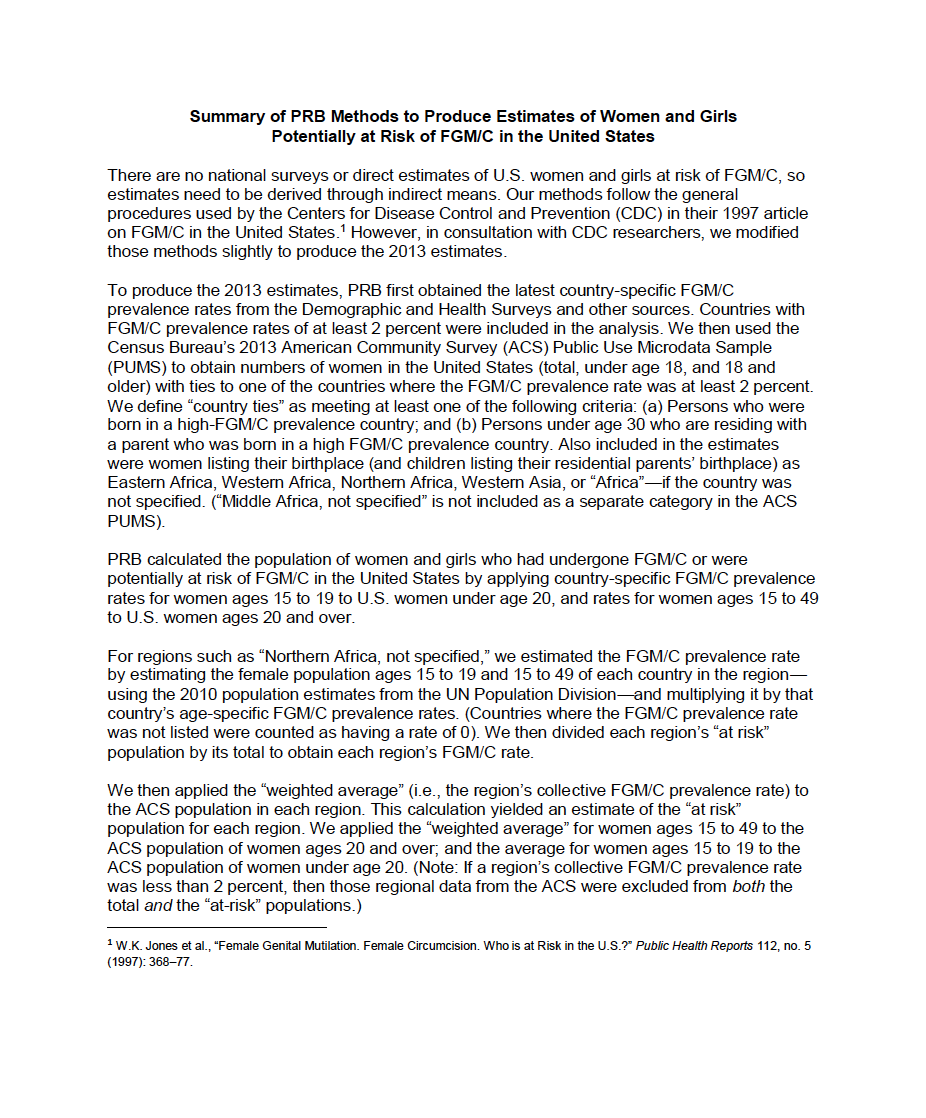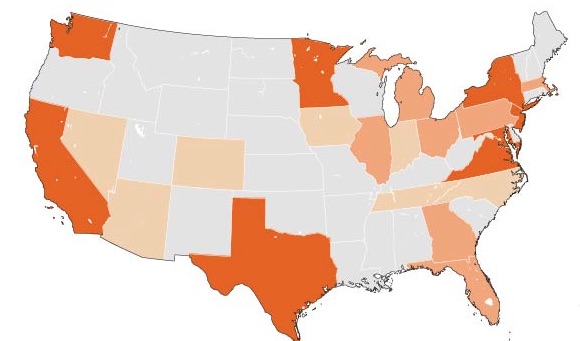
Risk of Female Genital Mutilation/Cutting in the United States, Methodology
Product: Report
Author: PRB
Date: November 14, 2016
Summary of PRB Methods to Produce Estimates of Women and Girls Potentially at Risk of FGM/C in the United States
There are no national surveys or direct estimates of U.S. women and girls at risk of FGM/C, so estimates need to be derived through indirect means. Our methods follow the general procedures used by the Centers for Disease Control and Prevention (CDC) in their 1997 article on FGM/C in the United States.1 However, in consultation with CDC researchers, we modified those methods slightly to produce the 2013 estimates.
To produce the 2013 estimates, PRB first obtained the latest country-specific FGM/C prevalence rates from the Demographic and Health Surveys and other sources. Countries with FGM/C prevalence rates of at least 2 percent were included in the analysis. We then used the Census Bureau’s 2013 American Community Survey (ACS) Public Use Microdata Sample (PUMS) to obtain numbers of women in the United States (total, under age 18, and 18 and older) with ties to one of the countries where the FGM/C prevalence rate was at least 2 percent. We define “country ties” as meeting at least one of the following criteria: (a) Persons who were born in a high-FGM/C prevalence country; and (b) Persons under age 30 who are residing with a parent who was born in a high FGM/C prevalence country. Also included in the estimates were women listing their birthplace (and children listing their residential parents’ birthplace) as Eastern Africa, Western Africa, Northern Africa, Western Asia, or “Africa”—if the country was not specified. (“Middle Africa, not specified” is not included as a separate category in the ACS PUMS).
PRB calculated the population of women and girls who had undergone FGM/C or were potentially at risk of FGM/C in the United States by applying country-specific FGM/C prevalence rates for women ages 15 to 19 to U.S. women under age 20, and rates for women ages 15 to 49 to U.S. women ages 20 and over.
For regions such as “Northern Africa, not specified,” we estimated the FGM/C prevalence rate by estimating the female population ages 15 to 19 and 15 to 49 of each country in the region—using the 2010 population estimates from the UN Population Division—and multiplying it by that country’s age-specific FGM/C prevalence rates. (Countries where the FGM/C prevalence rate was not listed were counted as having a rate of 0). We then divided each region’s “at risk” population by its total to obtain each region’s FGM/C rate.
We then applied the “weighted average” (i.e., the region’s collective FGM/C prevalence rate) to the ACS population in each region. This calculation yielded an estimate of the “at risk” population for each region. We applied the “weighted average” for women ages 15 to 49 to the ACS population of women ages 20 and over; and the average for women ages 15 to 19 to the ACS population of women under age 20. (Note: If a region’s collective FGM/C prevalence rate was less than 2 percent, then those regional data from the ACS were excluded from both the total and the “at-risk” populations.)
References
1 W.K. Jones et al., “Female Genital Mutilation. Female Circumcision. Who is at Risk in the U.S.?” Public Health Reports 112, no. 5 (1997): 368–77.

 ">
">
 ">
">